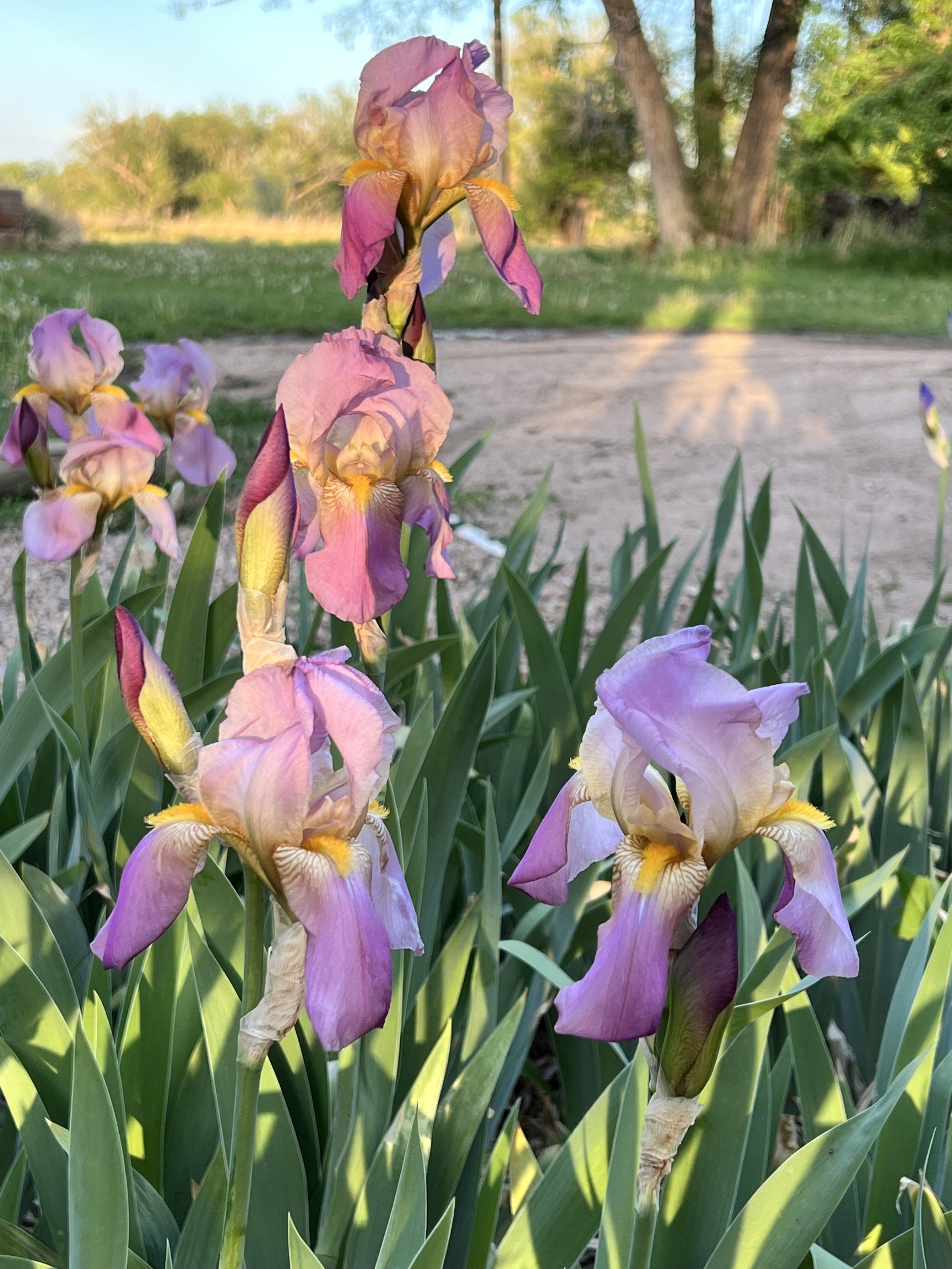My World of Irises
What I’ve learned caring for my 1500 irises….
When I moved in to my home, it was early March. Snow was still on the ground and I hadn’t seen the property yet in the Spring, so I was curious about what awaited me just beneath the ground. I hadn’t ever thought to ask the previous owners about what would come up in the Spring. First, I started to see small light green leaves poking through the snow in various places around the property, in what soon became apparent as an iris takeover. As the snow melted away, irises began to push into existence….everywhere. I realized by the end of April that this was a full fledged assault, and by the end of May, my entire property burst into a symphony of color and the sweet, sticky perfumed aroma of irises. If you’re looking for tips on cultivating an iris haven of your own, I'm here to share what I’ve learned so far.
If you’re new to iris gardening, and looking to plant some for the first time, select a sunny spot with well-drained soil for your irises. These sun-loving beauties thrive in full sun, ensuring optimal growth and prolific blooms. Adequate spacing between plants allows for proper air circulation. This is a REALLY important step when you’re starting out, because irises reseed themselves, and eventually (what happened to mine) they will grow so densely together that they’ll start to rot and stop flowering. Also, explore the diverse world of irises, from classic purples to whites and pinks, they come in MANY different colors. Understand the specific needs and characteristics of the iris varieties you choose to cultivate a garden that's as diverse as it is delightful.
When planting irises, I use a handy auger that connects to my drill. I can’t recommend this one enough, because it saves SO much time when planting bulbs. Incorporate organic matter into the soil. If you’re a Boulder local, Harlequin’s Gardens sells an organic homemade fertilizer, that I include when planting all my bulbs, shrubs, and trees. It helps bind the roots for efficient growth. Water thoroughly after planting to establish a healthy root system. Irises prefer evenly moist soil, especially during dry spells. Water deeply, but avoid waterlogged conditions—which can cause them to rot. A layer of mulch helps retain moisture and suppress weeds while providing a neat appearance. Of course, if you’ve been reading my blogs, you know already how I mulch - with leaves.
Every Spring, my whole world outside turns into a world of irises – where vibrant hues meet fragrant blossoms! It’s taken me some time to delve into the art of nurturing these charming flowers and many of mine are still overgrown.
Fertilizing irises in early Spring, try for 4-6 weeks before they bloom, can help them explode with thriving blossoms. Phosphorus-rich fertilizers are best for supporting blooming. Follow package instructions and refrain from over-fertilizing, as irises can be sensitive to excessive nutrients—this is part of why I really like Harlequin’s mix. Pruning is also key to keeping irises healthy and free from disease. Remove spent blooms promptly to redirect energy into new growth. You can also trim the leaves in a fan shaped pattern at the end of the season, here in Boulder I do this around October/November when the leaves start to brown and wither. However, it’s important to leave the leaves for most of the season so they can soak up energy for the plants.
Keep an eye out for common iris pests like aphids and powdery mildew. Insecticidal soap can be effective against aphids, while proper spacing and good air circulation help prevent mildew. Regular inspections ensure early detection and intervention. As I’ve mentioned in other blogs on my site, I am a big fan of releasing ladybugs and lacewings into my garden to combat pests. It’s natures way of maintaining the right bug ratio! Now that I’ve been working on mine for a few years, I’ve started to tailor my care routine to each season depending on the nuances of the weather. Spring is for fertilization, while summer demands consistent watering. Fall is an ideal time for more extensive pruning and preparing your irises for winter.
And remember, the journey from planting to blossoming is a rewarding one, and with a little care, your iris garden will be a testament to the beauty of nature's cycles. Happy gardening!
Now I’d be remiss to not mention Boulder’s very own Long’s Gardens, a heritage of iris cultivations and gardening. Long’s was founded in 1905 and has been a staple of gardening culture in the Front Range. If you’re interested to keep up with all Boulder Iris news, I’d encourage you to follow their newsletter!
***I participate in the Amazon Affiliates Program and I earn commission from qualifying purchases.



